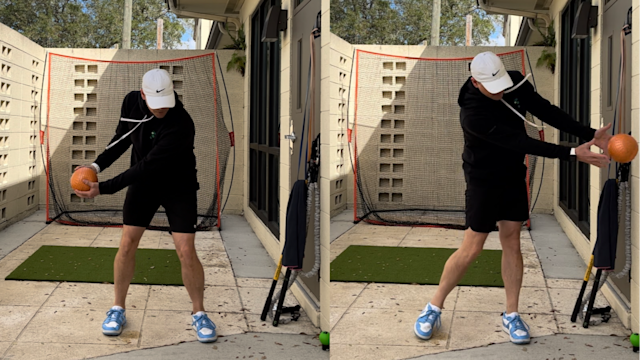quick coaching
How to Hit Out of Heavy Rough: 10 Keys to Escape Every Time
By Brendon Elliott, PGA
Published on

Yes, you've heard it, you've seen it, you've remarked at it: the rough at Oakmont Country Club for the 125th U.S. Open is downright gnarly.
Clips on social media like this one from Ben Griffin have poured in about the penal thickness of the rough that surrounds Oakmont's fairways. It'll certainly play a major role in determining the U.S. Open Champion this year.
If navigating deep rough is a chore for some of the game's best players, then it's often a nightmare scenario for us everyday golfers. Today, I want to share a practical solution for learning to escape the rough more often.
Here's a step-by-step practice routine to help you improve your chances of getting out of the rough with more success:
Equipment Needed:
- Golf club (a higher lofted club, like a pitching wedge or 9-iron, is recommended)
- Golf balls
- A spot on the course or driving range with deep rough
Try this step-by-step practice routine to help you improve getting out of the rough with more success:
1. Setup
- Find a patch of deep rough at your practice facility.
- Drop several golf balls into the rough to simulate real-course conditions.

2. Club Selection
Choose a higher-lofted club (like a pitching wedge or 9-iron) to help get the ball airborne from the thick grass.
3. Setup and Alignment
- Position the ball slightly back in your stance (closer to your back foot).
- Stand with a wider stance than usual for more stability.
- Slightly open your clubface to add loft and help the ball escape the rough.
4. Weight Distribution:
- Place a little more weight on your front foot.
- This encourages a descending blow into the ball, which is necessary to chop through the thick grass.
5. Grip
Hold the club a bit tighter than usual to prevent the club's rotation from being affected by the thick grass.

6. Swing Thought
- Use a steeper swing shape. Take the club back more vertically and aim to hit down sharply on the ball.
- Focus on hitting the ball first, then the grass. A clean, descending strike is key to getting out of the rough.
7. Follow-through and Finish
- Allow your follow-through to be shorter and more controlled.
- Because of the thick grass, it may not be as full or free-flowing as a regular swing.
8. Practice Rhythm
- Perform this drill with several balls to get used to the feeling.
- Focus on rhythm and confidence in your ability to strike the ball as cleanly as possible.
9. Evaluate
- Observe your results and adjust your approach as needed.
- If the ball isn't getting out with enough height, focus on a steeper swing path or adjust your weight positioning.
10. Repetition
Repeat this drill regularly in different spots of deep rough to gain consistent results.
Depending on the depth and thickness of the rough, what you consider a successful result should be something you have realistic expectations about. The rough is called rough for a reason. , the expectation should be to get out of the situation to the best of your abilities.
Practicing this drill regularly will boost your confidence and efficiency in managing deep rough situations on the course and give you a feeling of accomplishment and progress.
Remember, consistent practice and repetition are the keys to improving in any aspect of the game.
PGA of America Golf Professional Brendon Elliott is an award-winning coach and golf writer. You can check out his three weekly columns on RG.org, and to learn more about Brendon, visit OneMoreRollGolf.com.


